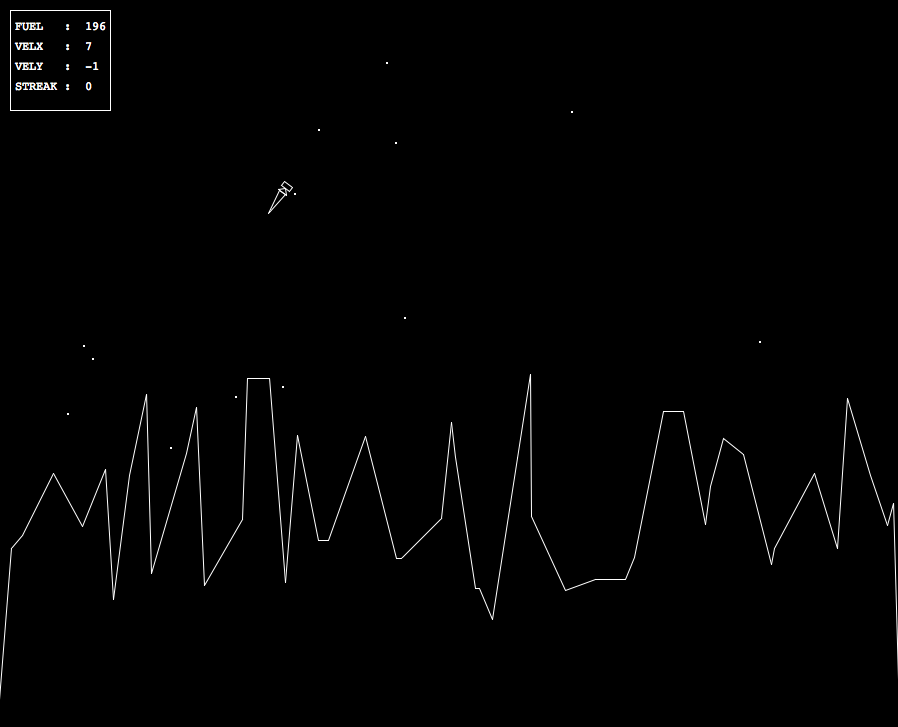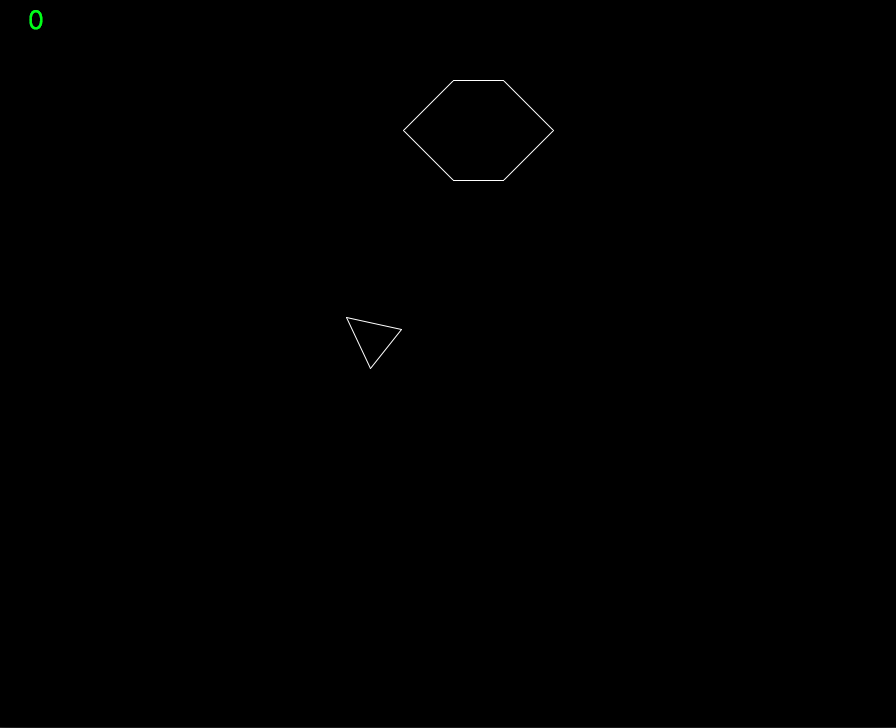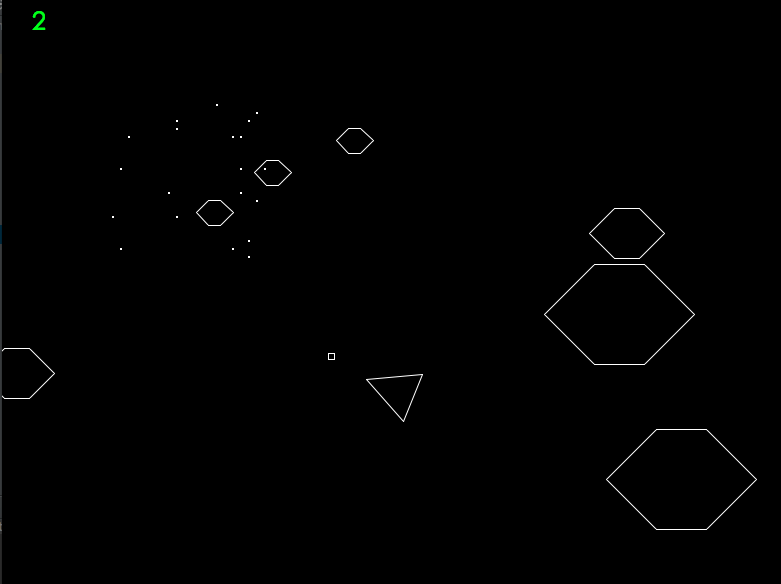2014 was when I really got interested in game development. Throughout the winter and into 2015 summer, I was interested in all aspects of game creation– everything from the code to the art.
Lunar Lander really appealed to my obsession with space at the time and brought everything together that I had previously worked on in one single project. Angles, horizontal and vertical velocities, and simple world generation are just a few examples of the components that define the programming side of Lunar Lander.

Finished product.
I had worked with horizontal and vertical velocities before in games like Asteroid, but I hadn’t explored anything with a constant downward vector (gravity) before Lunar Lander. This downward force really defines this game from other space games, as it’s a rare component that other games usually don’t have.
I also explored simple level generation while making this game. Normally it would be fairly easy to make a random sequence of lines to represent hills and valleys, but Lunar Lander requires little spots where the ship can land with ease. Thus, it took a bit of thinking to be able to implement landing strips into normal world generation.
The preliminary work on level generation would prove invaluable in my future projects because it built a foundation for the general logic required for building simple worlds.
The code can be found here (Java, 37 kb) : https://drive.google.com/file/d/0Bz_0wgRmDpKqS2xSMjNuekJQbTA/view?usp=sharing


Recent Comments